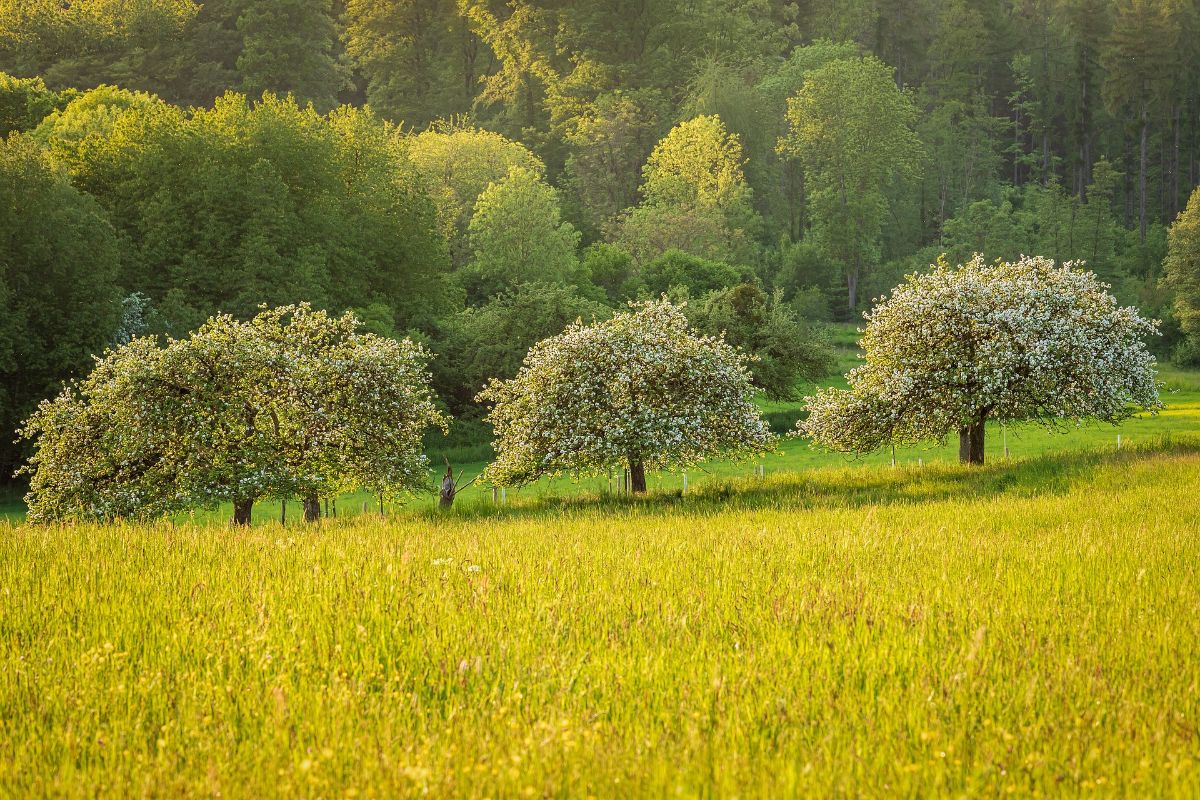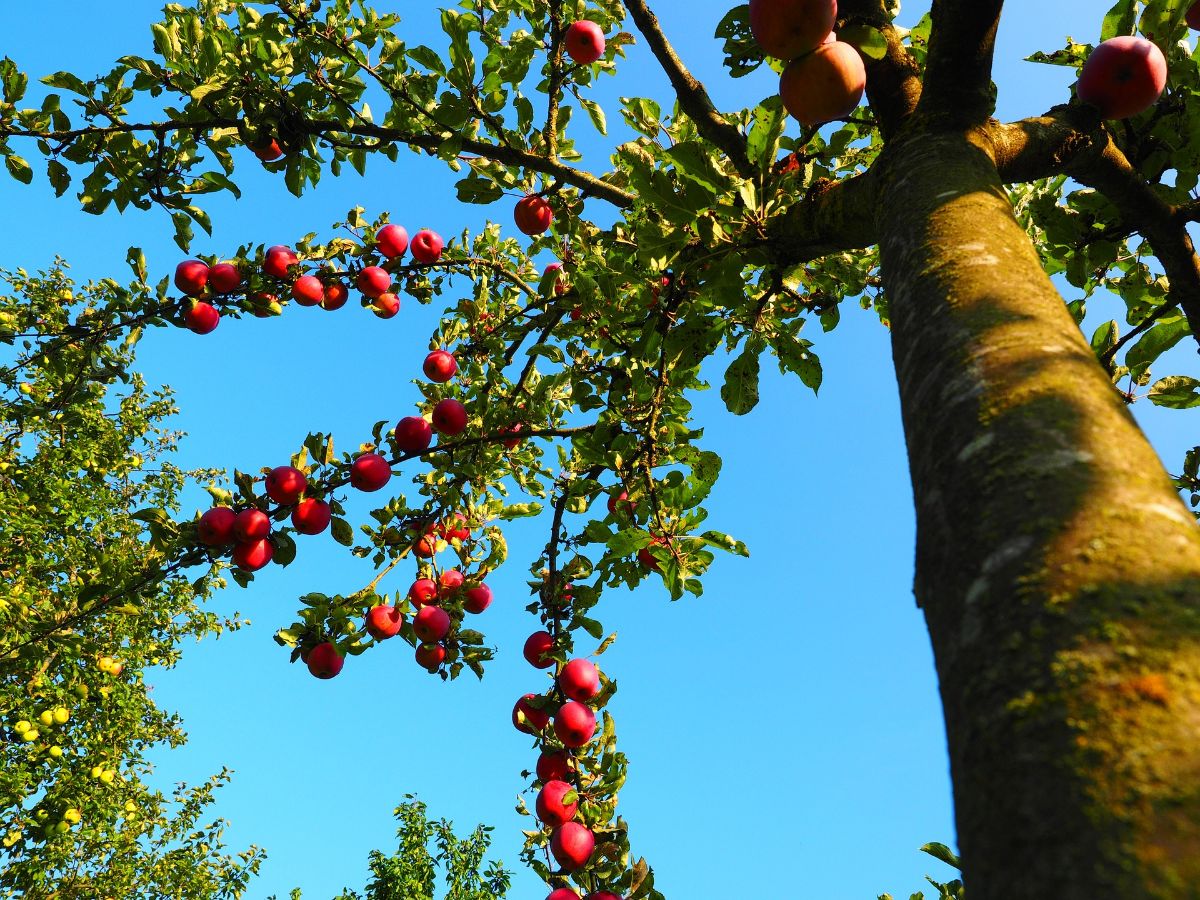
If you have a small garden, enough for fruit trees, the most normal thing is that you have some to enjoy the food freshly picked from the tree. If one of them is an apple tree, knowing what the apple tree diseases are, both in its trunk and in the leaves and fruits can help you last much longer.
For this reason, on this occasion, we are going to stop and tell you about the possible diseases of the trunk of the apple tree that you will face.
Contents
Basidiomycetes
This strange name actually refers to a mushroom. A priori, this is not a very dangerous disease of the trunk of the apple tree, especially since only affects dead parts of the treeso if they are removed, there would be no problem.
Now, it’s not that we want to say it’s good. Indeed, if they proliferate through the trunk, they can cause problems.
Visually, you can tell about these mushrooms because white spots will appear on the trunk. If they grow, they will do so concavely, so that they will look like seashells attached as if they have a suction cup in the part that connects them to the trunk.
If left untreated and active, they can end up growing a lot. and, ultimately, proliferating them.
As for their treatment, they must be removed from the trunk, especially if this area cannot be cut, to prevent them from wreaking havoc in the area. As we tell you, it is not dangerous, but it can be.

Chancre
This disease of the trunk of the apple tree also attacks the branches, and it is one that must be protected. In fact, this usually happens when the tree is not well maintained, and that is It attacks the most wooded areas or areas with wounds, leaf scars, trunk breaks…
What this fungus does is get inside through those sores and it creates depressions inside that crack and go outside and deepen inside. In fact, it ends up leaving the wood exposed. But worst of all, these depressions become so large that they prevent the sap from reaching that part of the tree, and with it that part dies.
Although it is said that this disease is not “dangerous”, the truth is that it is, especially if it appears in parts of the trunk that compromise the survival of the branches or part of the trunk itself. same.
And how to fix it? If possible, it should be cut the branch below this canker, but also burn it to prevent it from spreading to other trees or areas of the same apple tree. Wounds that occur to the tree with this pruning must be protected to prevent the fungus from re-entering.
In case it cannot be cut (because it affects the trunk itself), the solution is to make a deep cleaning of these wounds and of the canker itself to remove it, even by cutting off certain parts, in order to apply disinfectants and other fungal products to treat the fungus in situ.
yellow drill
Among the many trunk diseases of the apple tree, this is perhaps one of the most dangerous because it affects the tree very drastically. It mainly attacks young specimens and is characterized by this parasite starts with a hole in the trunk (also on the branches).
Inside, he begins to dig, always upwards, so as to empty the tree. Not only that, but you can cocoon and emerge as a butterfly, leaving a clutch of thousands of eggs continue to “consume” the apple trees.
How to solve it? There are two methods. The first is to insert a wire through the entry hole to “reach” the caterpillar and pull it out. Another method is to directly carve the damaged part, although this largely depends on where the entrance is.

apple snake
We are talking about a very common pest in apple trees, but in those that are much neglected. It mainly affects the branches and the trunk and does so through the lepidosaphe ulmi or mytilococcus ulmi.
You can detect it because the larva, which attacks the most, is long and yellow. At first, it moves along the trunk or branch, until it attaches itself to it and sticks its stylet to feed on the apple tree. In addition, he creates a shield around himself to prevent other insects from attacking him and thus protects himself until he becomes an adult. The shell will remain attached (because it protects the eggs until they hatch).
To cure it, you must first know that, in a certain way, usually does not cause damage, so it can be left alone (it’s part of nature). But if you don’t want this to appear, you can apply a mineral oil treatment to the trunk and branches.
papery canker
It cannot be said that this is a particularly dangerous apple tree trunk disease. In fact, in most cases only It produces the desiccation of the exterior wood and that it separates from the tree.
Its cause can be various parasitic fungi, but also bacteria. For this reason, in order to know how to treat it beforehand, it is necessary to determine what caused it (through laboratory analysis) in order to obtain the best to apply it to the tree and stop this problem.
But, as we tell you, this disease in itself does not affect the tree too much, although it exposes it to other problems (and diseases).

little bull
It is a scourge which, if it is solitary, does not have to cause problems; but if it proliferates a lot yes this will cause injuries and especially the wilting of the tree because it prevents the passage of sap.
This bug measures between 8 and 10mm. He is green and has bumps on either side of his chest. The female makes incisions in the wood, deep enough, to be able to lay the eggs there. If these incisions reach the bast, then the tree will be in trouble because this will prevent the sap from flowing properly.
To treat it, chemicals are useless, and the only thing is remove these damaged areas, as well as clean everything around to avoid more parasites of this type.
Do you know of other apple tree trunk diseases that can compromise the tree?
